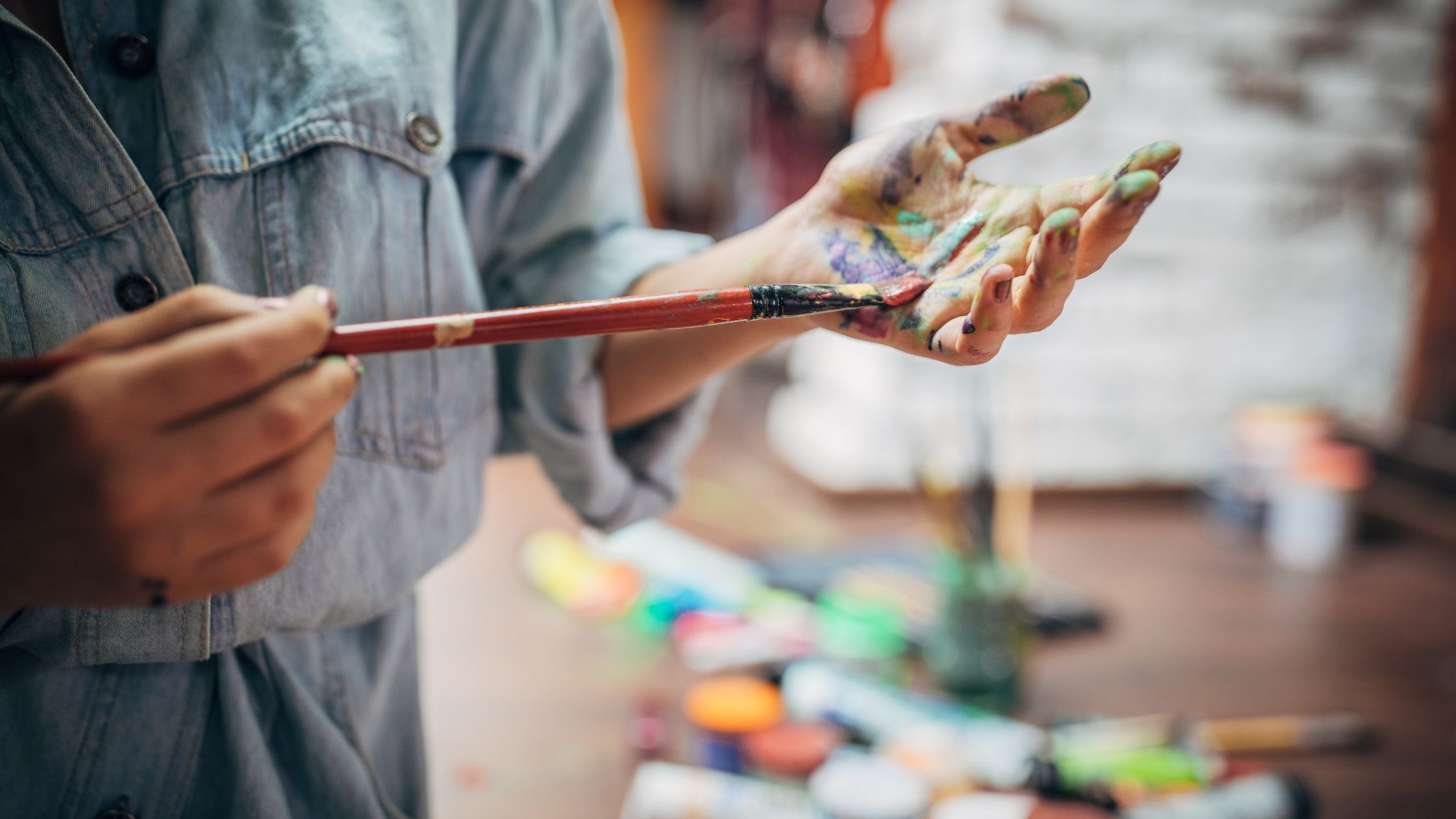
Abstract Painting Ideas for Beginners: Easy and FUN!
Oct 01, 2023Getting Started with Abstract Painting
Before you begin, it's important to choose the right materials and set up your workspace. The most common paints are acrylic or watercolor--both of which can be purchased at any art supply store. You'll also need a canvas (or other surface) and brushes or sponges for applying paint.
Once all of these supplies are gathered, it's time to start learning some basic techniques!
Inspiration and Ideas for Abstract Painting
Abstract painting is a style of art that focuses on shapes, colors and textures rather than realistic imagery. Abstract artists often use vibrant colors to create bold images that evoke emotion in the viewer.
To begin your journey as an abstract artist, you need to find inspiration for your paintings. There are many ways to do this:
- Researching and studying abstract art - This can help you learn about different styles of abstract painting as well as discover new techniques and* Discovering your own style - As you continue creating abstract works of art, you'll start developing a personal style that makes each piece unique from the others in its genre or medium (e.g., oil paints vs watercolors).
- Exploring different media/techniques - Experimenting with new materials like acrylics or pastels will allow you access into new worlds of color combinations never before seen by human eyes!
Abstract Painting Techniques
Abstract painting is a great way to express yourself and explore different styles. It's also a art world, as abstract paintings don't have to be perfect or realistic.
Abstract paintings are often made up of simple shapes and colors, with little detail. They can be done in any medium, but most abstract artists use paint because it's easy to blend colors together and create new ones with just one brush stroke!
Here are some techniques you can try:
Creating an Abstract Painting
- Starting with an idea
- Sketching out a plan
- Building up the painting
Exploring Different Tools and Materials
The first step to painting abstractly is exploring different materials. There are many different types of paints and brushes to try, so you can experiment with different textures and colors.
- Acrylics: These are a great choice for beginners because they dry quickly and don't require any special preparation before painting on them. They're also water-soluble, which means that if you make a mistake or want to change something in your work, all you need is some water!
- Oils: These are another popular option because they give rich colors that look like oil paintings (which makes sense since they're made from oil). However, this medium takes longer than acrylics do--about 24 hours--so it's not ideal if you want something quick and easy.
- Watercolours: This type of paint comes in tubes rather than bottles like acrylics do; its consistency resembles liquid but dries into powdery flakes when exposed directly by air currents such as fans or wind blowing through open windows/doors etc..
Composition and Balance in Abstract Painting
Composition and Balance in Abstract Painting
Abstract paintings are often made up of a variety of shapes and colors, but they can also be created by using just one color. This type of abstract art is known as monochromatic. A good example of this is Yves Klein's "Le Vide" (1958), which uses only blue paint on canvas. In order to create an effective composition, you will need to understand the principles of composition and balance.
The Elements of Design
When creating an abstract painting, it's important that your piece has balance and harmony so that it doesn't look cluttered or messy. The best way to ensure that your work has these qualities is through understanding the elements of design: line (or contour), shape/form (or mass), value/color contrast and texture/materials used within each element
Exploring Color Theory in Abstract Painting
- Color Wheel
The color wheel is a visual representation of the primary and secondary colors. It can be used to help you understand how different colors work together, or what colors look best together. - Emotional Response to Colors
Color has a powerful effect on our emotions and moods. This can be used in abstract paintings to create feelings such as calmness or excitement in your artwork. - Color Harmony & Contrast
When choosing which colors to use in your abstract painting, it's important to think about how they work well as how they contrast with each other
Abstract Painting Tips and Tricks
- Use a limited palette.
- Experiment with different textures.
- Use a grid system to help with composition.
Abstract Painting Projects for Beginners
- Create a series of paintings.
- Create a painting from a photo.
- Create a painting from memory.
Looking to start your abstract painting journey? This is a great place to start!
Unleash your inner creativity and join an online art course!
Stay connected with news and updates!
Join our mailing list to receive the latest news and updates from our team.
Don't worry, your information will not be shared.
We hate SPAM. We will never sell your information, for any reason.



